Here are all the vehicles sold by the 12 brands of the Fiat Chrysler PSA merger
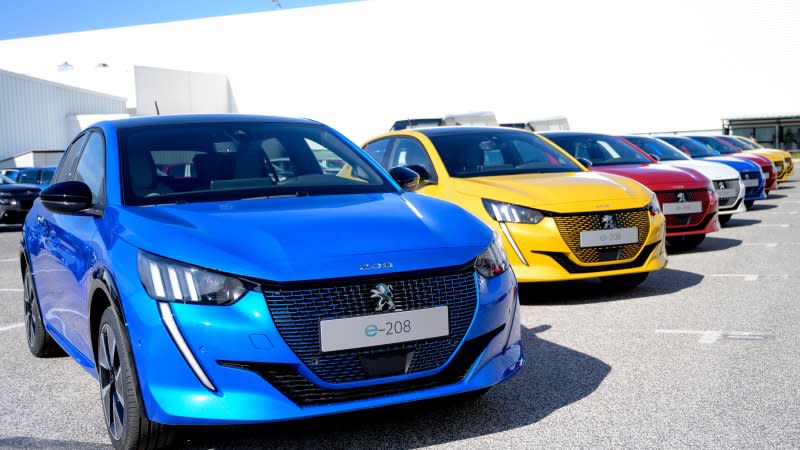
Sven Gustafson and Ronan Glon contributed to this report.
Whether or not the formal merger between Italian-American automaker Fiat Chrysler and European conglomerate PSA Group means the return of Peugeot to the U.S., one thing’s for certain: The combined company will have a truckload of different brands.
Sorting out what the deal means for all of them, including where they are sold and built, and whether and where there is product overlap, will be a key question for the two companies as they formalize the merger over the next 12 to 15 months. So far, both sides have steadfastly insisted that no job cuts or plant closures will result from the tie-up. We’ll see about that.
In the meantime, we’ve compiled an alphabetical list of all the vehicles currently sold in Europe and in North America by the various FCA and PSA brands, along with the years they debuted. We've gone into more detail about the European vehicles you might be less familiar with.
The joint empire also has an antique store's worth of heritage-laced models and dormant brands, like Plymouth, Imperial, Simca, and Panhard, and it would have been even bigger had FCA not spun off Ferrari in early 2016.
Alfa Romeo

A legacy Italian sports car brand with roots in racing, Alfa Romeo has been struggling with declining U.S. sales.
Giulia (2015): Alfa’s rear-wheel drive sports sedan competes against German luxury sedans in North America and Europe.
4C (2013): The lightweight mid-engine rear-wheel-drive sports car is being phased out.
Stelvio (2016): The Stelvio is a small luxury performance crossover that competes against the likes of the Porsche Macan and BMW X3 and is sold in both Europe and North America.
Giulietta (2010): Sold in Europe, this compact hatchback is Alfa’s entry-level model. After initially planning a rear-wheel drive 2020 update, the Giulietta is reportedly being nixed as part of FCA’s latest product plans.
Chrysler
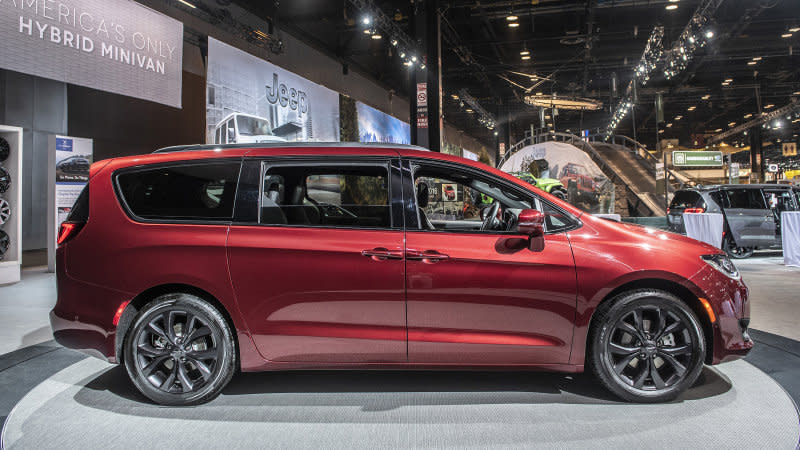
Despite lending its name to its parent company, questions abound about the future of this legendary but faded brand, which is not offered in Europe.
300 (2011): Despite rumors of its pending demise, the four-door sedan lives on mostly unchanged for the 2020 model year, at least.
Pacifica (2016): The successor to the Town & Country is Chrysler’s bestselling model by a long shot and comes in gas-only and plug-in hybrid versions.
Voyager (2019): Chrysler’s newest minivan launches as its entry-level minivan for the 2020 model year. It’s essentially a rebadged version of lower trims of the Pacifica.
Citroën

Known for spectacular quirkiness, Citroën has survived several near-death experiences since its creation in 1919. It was rescued by Peugeot in 1976, and the two have operated as sister companies since. It's positioned a little bit lower than its sibling, but it's not a low-cost brand, either.
Berlingo (2018): Like the Peugeot Rifter it's mechanically identical to, the Berlingo is cheaper and more spacious than a comparably-sized crossover, so it caters to families with kids and a lot of gear to haul, as well as to adventurers looking for a daily driver that can effortlessly swallow mountain bikes and a long weekend's worth of camping gear. The tradeoff is that it largely looks and drives like the commercial vehicle it's based on.
C-Zero (2010): The C-Zero is a badge-engineered Mitsubishi i-MiEV. We can't fathom how or why Citroën still sells it in 2019.
C1 (2014): The smallest, most affordable member of the Citroën range isn't long for this world. Tightening safety and emissions regulations and thinning profit margins are poking holes in the cheap and the cheerful hatchback's business case.
C3 (2016): Citroën made its bread-and-butter model more SUV-like to increase its appeal. The look isn't to everyone's tastes, but the C3 remains an excellent value for buyers seeking a cheap, basic and dependable commuter that rarely needs to stop for fuel.
C3 Aircross (2017): The C3 Aircross took Citroën into the urban crossover segment for the first time. It looks a lot like a taller evolution of the C3 it shares its basic platform with, but it hasn't managed to match (let alone exceed) the popularity of the Renault Captur, one of its main rivals.
C4 Cactus (2014): Believe it or not, the C4 Cactus (pictured) is Citroën's answer to the Volkswagen Golf. It started life as a crossover, but it became decidedly more car-like when the C4 hatchback retired without a direct successor in 2018. Citroën will allegedly axe the C4 Cactus and replace it with a true Golf-fighting model in the coming years.
C4 Spacetourer (2013): The C4 Spacetourer was known as the C4 Picasso until 2018, when Citroën decided it no longer wanted to pay royalties to the painter's family. It's one of the last vestiges of Europe's vanishing minivan segment but its versatility is difficult to beat.
C5 Aircross (2017): The C5 Aircross is built on the same bones as the Peugeot 5008, though the two crossovers look nothing alike. Autoblog understands it was developed largely for the Chinese market, but the rising popularity of high-riding models convinced executives to add it to the Citroën catalog in Europe to temporarily fill the gap left by the C5 sedan.
E-Mehari (2016): This vaguely retro-styled interpretation of the original Mehari isn't a true Citroën; it's made by Bolloré, the French company that built the BlueCar deployed in Indianapolis as part of a car-sharing service. Expensive and eye-wateringly slow, the E-Mehari is the textbook definition of a niche model. Consider yourself lucky if you spot one in the wild.
Dodge

FCA’s other O.G. American nameplate plays in the U.S. markets for performance enthusiasts and family haulers, but its models are getting long in the tooth.
Challenger (2008): FCA’s brawny two-door muscle car still sells in good numbers despite 11 years without a redesign. It plays in the same sandbox as the Ford Mustang and Chevrolet Camaro.
Charger (2011): A large rear-wheel-drive performance sedan that shares a platform with the Chrysler 300 and is slightly smaller than the Challenger. It’s Dodge’s second best-selling model after the Caravan.
Durango (2011): Dodge’s midsize three-row SUV shares a platform with the Jeep Grand Cherokee.
Grand Caravan (2007): FCA says the minivan will eventually go away, but it lives on for 2020, anyway, despite the advent of the similarly priced Chrysler Voyager.
Journey (2007): The midsize SUV offers three rows of seating and competes against the likes of the Hyundai Santa Fe and Kia Sorento. There's a redesign in the works and it could be made in Italy.
DS

PSA created DS in 2014 to take the fight directly to Audi, BMW, and Mercedes-Benz. That's easier said than done, and DS-badged cars still don't feel quite as nice as their German rivals. The brand risks overlapping with Alfa Romeo once PSA and FCA shack up.
DS 3 Crossback (2018): Essentially a nicer evolution of the Peugeot 2008, the DS 3 Crossback perfectly illustrates the ongoing shift in the new car market. It's a four-door crossover developed to replace a two-door hatchback. It's built on PSA's modular platform, the one that will underpin numerous FCA products in the 2020s, and buyers can select an electric powertrain.
DS 7 Crossback (2017): The DS 7 Crossback (pictured) suffers from a bland design that's a little too Audi-esque, and the firm's lack of image has hampered its career in Europe's German-dominated luxury car segment. The best place to see one in the wild is at the Charles de Gaulle airport in Paris, where Air France uses the model as a VIP shuttle.
Fiat

The Italian brand has a rich history, but its small cars haven’t made much of an impression on American car buyers.
124 Spider (2015): A two-door convertible roadster for the U.S. that shares a platform with the Mazda Miata MX-5.
500 (2007): Fiat’s most recognizable small car is being discontinued in the U.S., though it remains a hot seller in Europe.
500X (2014): A small all-wheel-drive crossover sells far better in Europe than it does stateside.
500L (2012): The five-seat, four-door compact wagon hasn’t done much to distinguish itself from U.S. competitors like the Honda Fit or Kia Soul. Its sales in Europe are dropping, too.
Panda (2011): The third-generation Panda is Italy's best-seller by a comfortable margin, but Fiat strongly hinted the model won't be replaced when it announced plans to exit the minicar segment in the early 2020s. The shockingly capable 4x4 model (pictured) is extremely popular in Europe's mountainous regions, and credible rumors claim its underpinnings will serve as the foundation for an entry-level Jeep tentatively due out in the early 2020s.
Tipo (2015): Fiat's bargain-priced answer to the Volkswagen Golf and the Ford Focus is available as a hatchback, a sedan and a station wagon. The Tipo is more commonly seen on airport rental car lots than in private driveways due largely to a lack of image.
Qubo (2007): The Qubo is a compact, city-friendly van Fiat developed jointly with PSA well before either company began hammering out the details of a merger. Peugeot and Citroën stopped offering their variants of it in 2017, but Fiat still manufactures the model (which is also available as a panel van named Fiorino) as of 2019. It's the smallest van sold on the European market.
Doblo (2010): Built in people- and cargo-hauling configurations, the Doblo van is relatively popular in Italy, but it's an also-ran elsewhere in Europe due in part to its age. Its rivals are considerably more modern. It's sold in the United States as the Ram ProMaster City.
Jeep

The off-road brand has its roots in U.S. Army vehicles and has become one of the most lucrative automotive brands on the planet. Revivals of the Wagoneer and Grand Wagoneer large SUVs are in the works.
Cherokee (2013): The rugged midsize SUV is one of Jeep’s top-selling models in the U.S. and is also sold in Europe.
Compass (2016): Jeep’s compact SUV is the smallest of the look-alike trio that also includes the Cherokee and Grand Cherokee. Also built in Melfi, Italy, including a PHEV version, and sold in more than 100 countries.
Gladiator (2018): Essentially a Wrangler extended to become an off-road pickup truck with four doors, the Gladiator is in its first sales year in North America.
Grand Cherokee (2009): Jeep’s best-selling model in the U.S. is also sold in Europe, where sales pale in comparison.
Renegade (2014): Jeep’s compact SUV is getting a plug-in hybrid version for Europe and North America in 2020.
Wrangler (2017): The boxy two- and four-door SUV with removable tops and doors is another hot-seller in the U.S that barely registers in Europe.
Lancia

Lancia once made some of the most innovative and luxurious cars on the planet; it notably designed the first mass-produced V6. Years of mismanagement and a long string of half-baked, badge-engineered models left it utterly battered. Former FCA CEO Sergio Marchionne wanted to close the brand, but where it stands in 2019 is a little bit murky because the name has a lot of equity in Italy.
Ypsilon (2011): Now sold exclusively in Italy, Lancia's only remaining model is a four-door, upmarket-ish hatchback built on the same bones as the Fiat 500. It's old, and it's likely the last Lancia we'll ever see, but it outsold the entire Alfa Romeo brand in Italy during the first nine months of 2019.
Maserati
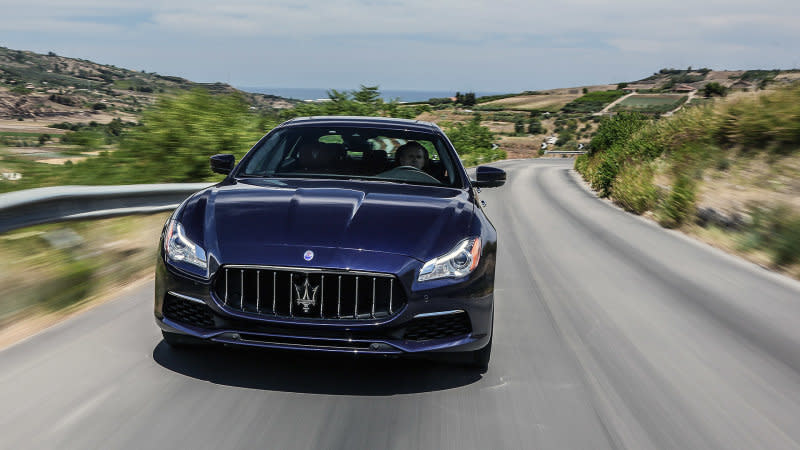
Part of Fiat since 2005, Maserati traces its founding to 1914 in Italy and today sells sports cars and luxury vehicles in more than 70 countries.
Quattroporte (2013): The brand’s flagship is a full-size luxury sedan.
Levante (2016): Maserati entered the crossover fray with its first SUV with a Ferrari-sourced V8, for now, powering its two highest trim models. It competes in North America and Europe against the Porsche Cayennes and BMW X6s of the world.
Ghibli (2013): The sports sedan competes against four-door luxury cars like the Porsche Panamera and Audi A7.
GranTurismo (2007): Maserati’s sports car is available as a coupe and convertible, and though the brand has dangled it above the scrap heap, the latest indication is that it will see a new generation in 2021.
Opel/Vauxhall
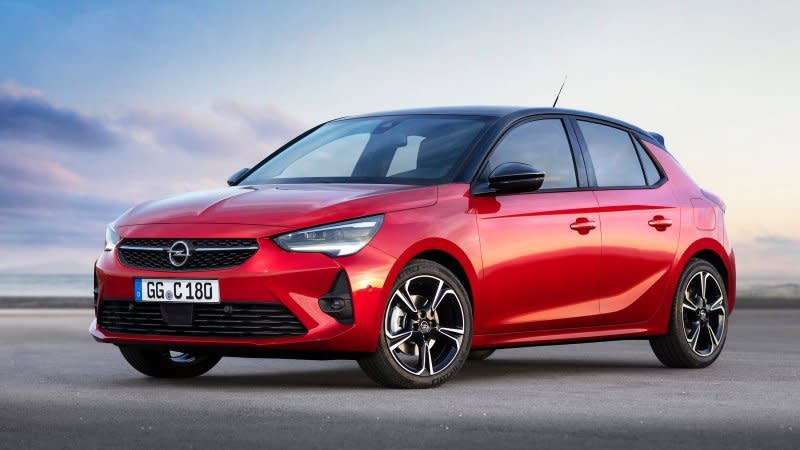
Opel is Germany's other people's car brand. It was gradually twinned with England-based Vauxhall during the 1970s, and their products have been identical with the exception of the badge on the grille ever since. Vauxhall is only present in the United Kingdom; Opel is more global. PSA purchased both automakers from General Motors in 2017, and performed a spectacular turnaround that brought them back to profitability in record time.
Astra (2015): The Astra has rarely been an exciting car, and the current-generation model is absolutely no exception. It's overshadowed by French and German rivals; European sales fell by 27% in 2018, putting it in the 21st spot on the sales chart.
Combo Life (2018): The Combo Life is the Opel/Vauxhall version of the Citroën Berlingo and the Peugeot Rifter. All three vans are identical under the sheet metal, and they overlap in many markets, but automotive jingoism runs strong in the segment, so the strategy makes sense. Germans would rather buy an Opel van than one with Peugeot badges.
Corsa (2019): The current-generation Corsa (pictured) is built on the same platform as the Peugeot 208. It's far more interesting to look at than its predecessor, and it's available with an electric powertrain, so it's one of Opel's most promising models. The difference in design and technology between the Astra and the Corsa demonstrates how the brand evolved under Peugeot's ownership.
Crossland X (2017): Closely related to the Citroën C3 Aircross, the Crossland X competes in a segment experiencing enormous growth, yet it hasn't been able to take full advantage of the market's shift towards high-riding models.
Grandland X (2017): Opel's variant of the Peugeot 3008 does reasonably well in Germany and in the United Kingdom, its home countries. It's not nearly as popular as its French rival on the European scene, however.
Insignia (2017): If the Insignia looks familiar, it's likely because it's sold as the Buick Regal in the United States. It's a competent car, but it's positioned in a segment of the market that's free-falling, and its future doesn't look markedly brighter than the Regal's.
Peugeot

Peugeot began making cars in 1896, though it was founded in 1810 and spent most of the 19th century making bicycles, pepper mills and hand tools, among other products. It described itself as being "between the Bugs and the Benz" in the 1970s, but in 2019 it's on about the same level as Volkswagen. Its image and cars improved exponentially during the 2010s.
108 (2014): Peugeot's entry-level model is twinned with the Citroën C1 and the Toyota Aygo. PSA strongly hinted it will leave the minicar segment in the coming years, so the 108 is on its way out without a replacement in sight. Toyota remains committed to it, however.
208 (2019): The modular architecture found under the second-generation 208 (pictured) helped PSA seal the merger with FCA. It's modern, well-designed, and multi-energy, which allows Peugeot to offer gasoline-, diesel- and electricity-powered variants of the hatchback. The 208 is one of Europe's best-selling models, and we expect the overhaul will move it up on the sales chart.
2008 (2019): The second-generation 2008 is a strong entry into one of the most competitive segments of the European market. Positioned at the bottom of Peugeot's crossover range, it's built on the same platform as the 208, and it's available with an electric powertrain.
308 (2013): The 308 is one of Peugeot's oldest cars, and it deserves a lot of credit for helping launch the brand's turnaround, but it has never managed to give the Volkswagen Golf a run for its money. In Europe, Peugeot sold 155,925 units of the 308 in 2018, a number that put the model in 24th place. The aging seventh-generation Golf led the market with 445,754 sales.
3008 (2016): The second-generation 3008 was the first model released after Carlos Tavares took PSA's reigns, and it was the right car at the right time. It became one of the 10 best-selling cars in France a few short months after deliveries began. It remains one of the brand's most popular models; it was the 14th best-seller in Europe in 2018, and the third best-seller in France.
508 (2018): Peugeot defiantly argued there's still a strong case to be made for large sedans when it redesigned the 508. Also available as a station wagon, it's characterized by a sharp, head-turning design and user-friendly in-car technology.
5008 (2016): Peugeot's answer to the Toyota RAV4 and the Volkswagen Tiguan is better-tailored to the American market than any of the company's other models. It's a stretched variant of the 3008 with seven seats, though we wouldn't recommend trying to shoehorn adults in the third row.
Rifter (2018): The Rifter is the passenger-carrying variant of the Partner; think of it as France's answer to the Ford Transit Connect. The segment it competes in was huge during the 2000s but buyers gradually left as they caught crossover fever. It nonetheless appeals to a small but loyal group of motorists who value practicality more than they care about style.
Ram
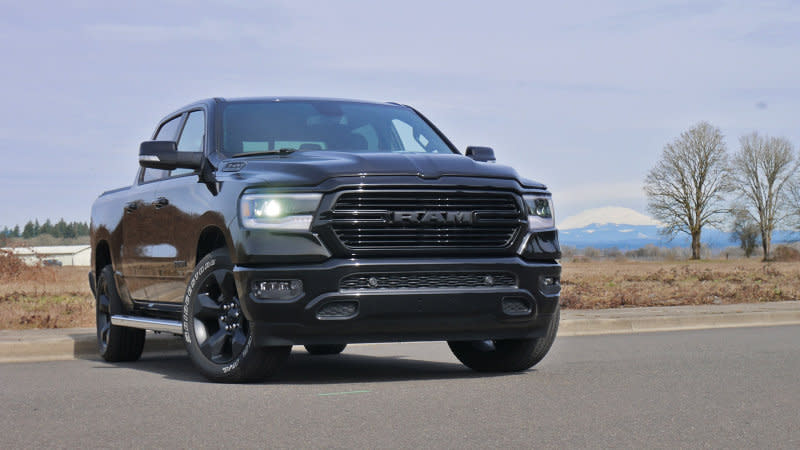
Formerly the nameplate of a Dodge truck, Ram was spun off as its own truck brand in 2009. Along with Jeep, it’s one of Fiat Chrysler’s cash cows, a volume and profits generator. Former CEO Sergio Marchionne even discussed the possibility of spinning it and Jeep off into their own companies.
1500 (2018): A rugged full-size pickup beloved by many truck enthusiasts that competes with the Ford F-150 and Chevrolet Silverado for U.S. truck primacy. The last-generation model is still available and is called the 1500 Classic.
2500/3500 (2019): Heavy-duty trucks.
ProMaster (2006): Ram’s work van, available in many configurations.
ProMaster City (2010): See Fiat Doblo.



